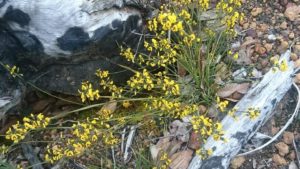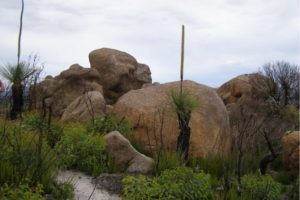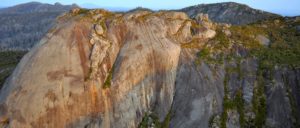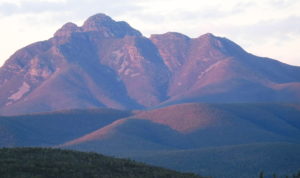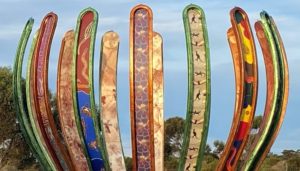Welcome to the historic and picturesque area of Mount Barker. Located in the stunning southwest of Western Australia, Mount Barker has many Trails to walk, wildflowers to explore and scenic views to marvel at.
One of the Oldest Ranges the Porongurup range is situated in the area. The name is derived from the Aboriginal placename, and consequently arrived with no spelling as such. The mountain range includes Castle Rock, a popular climbing destination, and the Devils Slide.
A small drive away is the ever-popular Bluff Knoll. Bluff Knoll is the highest peak of the Stirling Range in the Great Southern region of Western Australia. It is 1,099 metres (3,606 ft) above sea level. Local Aboriginal people, from the Qaaniyan and Koreng groups (or tribes), who wore kangaroo skin cloaks in cold weather, called the mountain Pualaar Miial, meaning “great many-faced hill” or place of “many eyes”. Climbing Bluff Knoll, a round trip of about 6 kilometres, takes three to four hours, and can be achieved by anyone with a reasonable level of fitness.
The new trial on top of Mount Barker Hill is also a great quick walk for all fitness abilities, has full disable access and views stretching all the way to Albany and the ocean on a clear day.
You will notice the abundance of natural beauty in the environment in and around the towns. The area boasts truly stunning and unique scenery, which you can best enjoy by putting on your walking shoes and experiencing it firsthand.
Be Prepared
Escaping your everyday life into the natural environment can be a great way to spend your holidays. The Trails through the Mount Barker region can also be challenging and subject to rapid weather changes. You need to be aware of the risks and take responsibility for your own safety and the safety of others in your group (especially children). Planning and preparing before your trip is a key component to staying safe and having an enjoyable experience.
The following are a few tips for planning your trip:
- Select a walk suitable to your fitness level and experience.
- Be prepared by taking clothing, water and equipment to suit changes in weather and track conditions.
- Walk with friends, it’s more fun and solo bushwalking creates its own risks.
- Let a reliable person know your plans before you go. Tell them where you are going and when you plan to return – be sure to advise them of your safe return.
- Carry a map and mobile phone but please be aware that some areas around Albany do not have mobile phone coverage.
- Bushwalking is not recommended in hot and windy conditions due to the risk of bushfire.
- Take adequate water, as well as suitable clothing and shoes.






